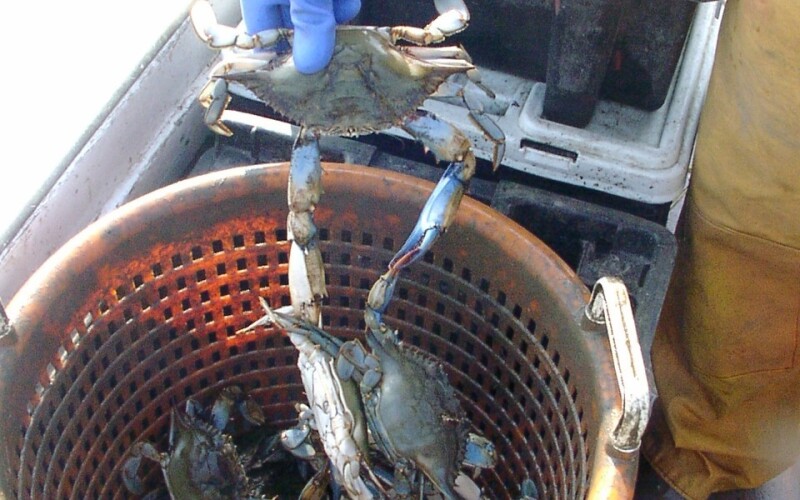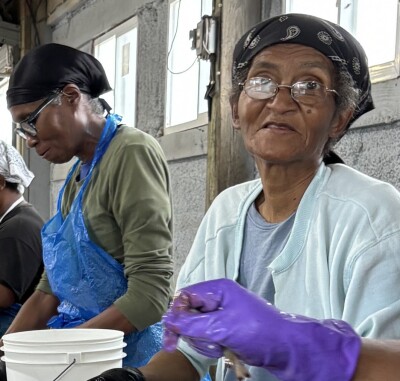The annual Chesapeake Bay Blue Crab Winter Dredge Survey estimated crab numbers at 238 million in 2025, down from 317 million in 2024 and the second-lowest number since the survey began in 1990.
The dredge sampling, a cooperative effort between the Maryland Department of Natural Resources and the Virginia Institute of Marine Science, showed decreases in the abundance of adult male and female crabs, as well as a decline in the juvenile population, according to a summary issued by the Maryland DNR.
The results showed the sixth consecutive year of below average juvenile recruitment found in the survey.
“We saw a very high mortality rate among blue crabs this winter, likely due to several cold snaps,” said Mandy Bromilow, DNR’s blue crab program manager. “With the results of the stock assessment next year, we hope to have more insight on what could be contributing to the ongoing low juvenile recruitment and what we can do to support the Chesapeake Bay’s blue crabs. Until then, we need to maintain caution in our management approach for blue crabs.”
Total estimated abundance for 2025 is the second lowest in the history of the survey, since it started in 1990. The lowest estimate was 226 million crabs in 2022. Juvenile abundance of 103 million in 2025 was a decrease from 138 million last year, and the third lowest abundance on record, after 2021 and 2022.
The estimated number of spawning age female crabs decreased from 133 million in 2024 to 108 million in 2025. The number of adult male crabs decreased from 46 million in 2024 to 26 million in 2025.
“The female abundance is above the threshold number of 72.5 million crabs and below the target of 196 million crabs. In fisheries management, target numbers represent the desired state of a fishery, while thresholds are lower numbers that can trigger a management response,” according to the DNR summary.
However, based on the current management framework for the Chesapeake fishery, “the abundance of mature females should be high enough to support a strong juvenile year class given the right environmental conditions,” according to Maryland officials.
U.S. blue crab harvests are notorious for going through boom and bust years, as the species is highly variable and influenced by a host of environmental factors from local nursery habitat, pressure from marine predators and broader oceanic conditions.
Blue crab management in Chesapeake Bay is coming up for an update with the ongoing stock assessment expected to be ready in spring 2026. Scientists will examine years of data to assess potential factors that could be affecting the blue crab population, including hypoxia, water temperature, habitat availability, and predation by blue catfish.
The previous blue crab stock assessment in 2011 and accompanying management decisions helped to bring the Chesapeake’s blue crab population back from more than a decade of low abundance and harvest levels. The current stock assessment will serve as a critical update to that work by ensuring that management targets and thresholds, including sustainable fishing rates, are set appropriately.
The Winter Dredge Survey has been conducted cooperatively by Maryland and Virginia since 1990; the results are reviewed annually in an effort to maintain consistent management efforts across the jurisdictions. Throughout the survey, biologists use dredge equipment to capture, measure, record and release blue crabs at 1,500 sites throughout the Chesapeake Bay from December through March. Full results from the survey can be seen on the DNR website.







